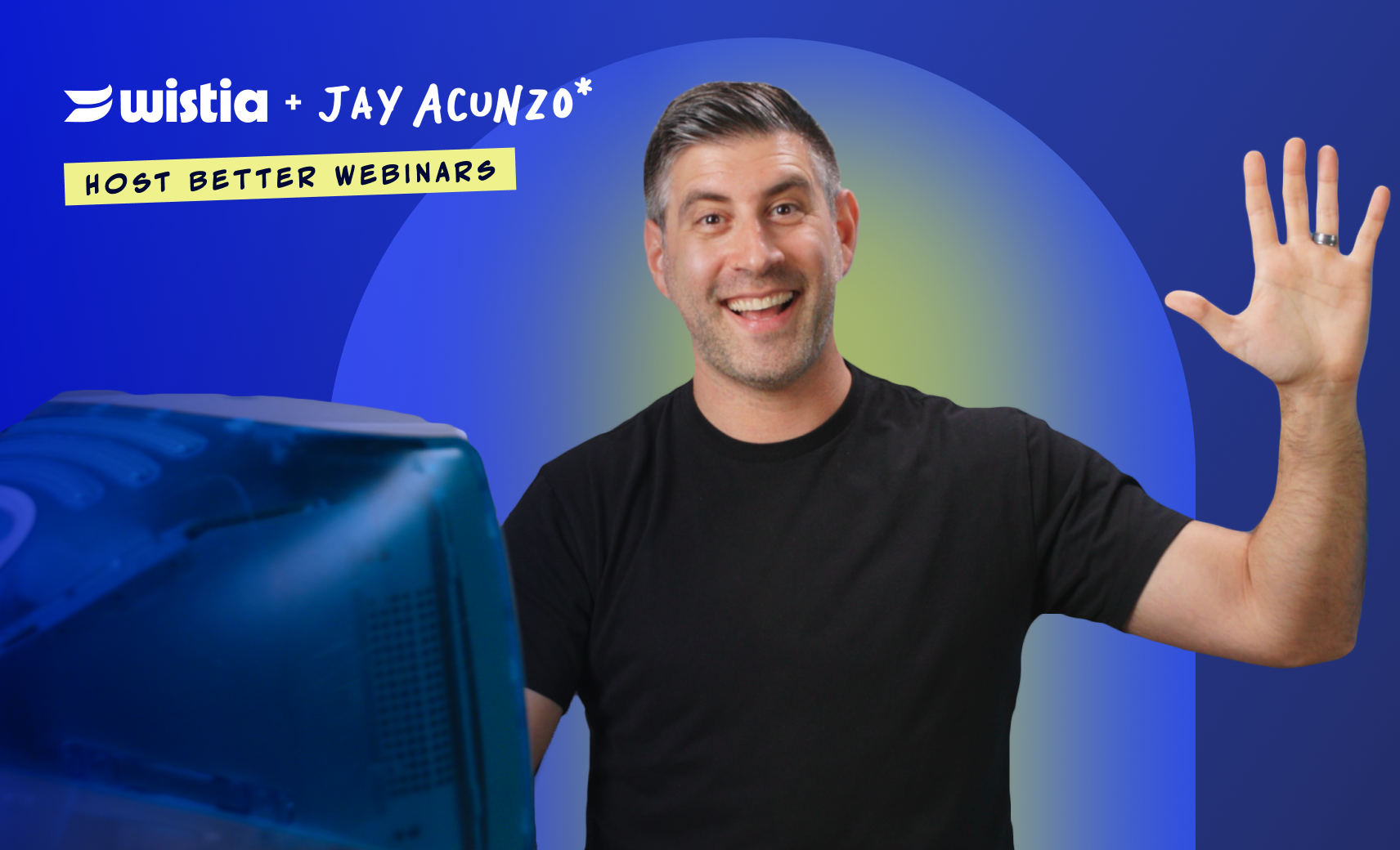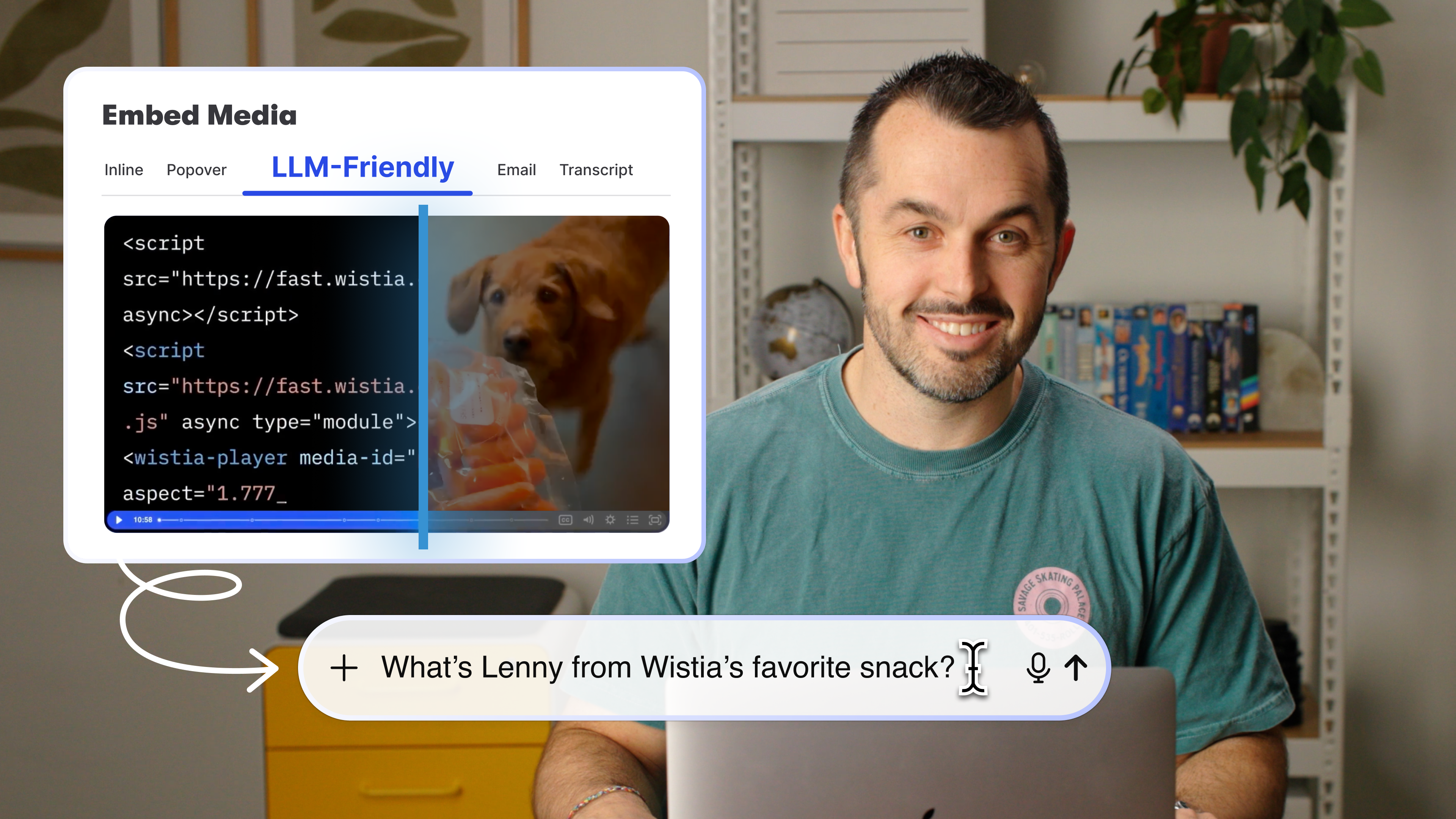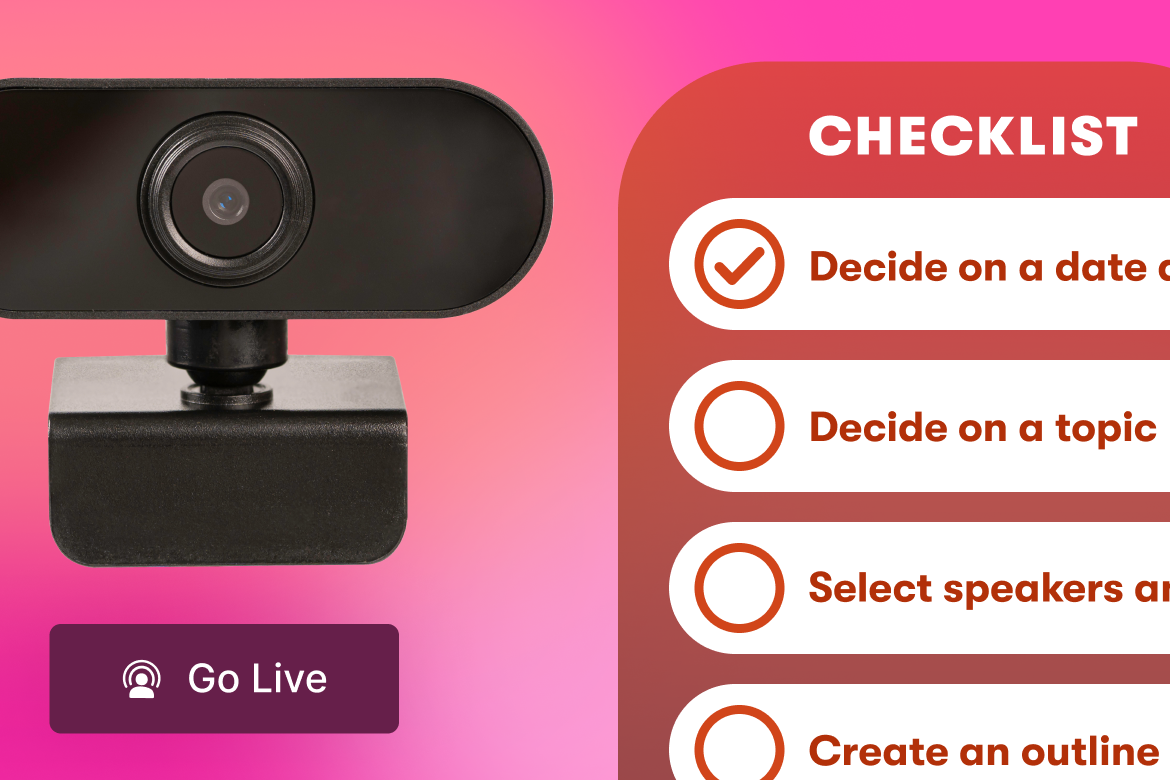How to Direct Non-Actors in Your Next Video
Master the art of creating a comfortable atmosphere for your video talent with these tips for preparing your shoot, directing, and coaching your teammates to achieve their best takes.
June 8, 2023
Topic tags
If you’re shooting business video, you’re likely dealing with real people, not actors. This means they might feel uncomfortable or vulnerable on camera.
Here at Wistia, we’re all about making businesses more human, so we like to encourage everyone to get in front of the camera at one point or another. As a result, we’ve picked up quite a few tricks for directing non-actors.
Before the shoot
Here’s everything you need to prepare for the shoot with your non-actor.
Prepare the script
Memorizing lines can be difficult and stressful, so make things easier on your teammates by preparing the script. Go ahead and break up those paragraphs into 2–3 sentence chunks. That way, the talent can memorize and deliver shorter lines.
Planning to show some B-roll? Note where those shots are located, so that your talent knows they won’t be filmed for those lines. They can just read right from the script with a smile on their face!
Knowing what doesn’t need to be memorized will save tons of time and stress. Voiceovers tend to be way less nerve-racking than on-camera shots.
Table read
Always have your talent read the script out loud before you even step foot into the studio. Encourage them to read the lines just as they would in front of a camera. As the director, this is your moment to give honest, helpful feedback.
Pay attention to energy level, line readings, and pronunciation, and let your subject know what you’re looking for in an honest, clear way. Once your talent steps in front of those bright lights, it’ll be harder for them to receive this kind of feedback.
Control the environment
No matter how outgoing you are, it’s scary to get on camera! So as the director, it’s on you to keep the talent as comfortable as possible.
- Kick people out. Get everyone out of the room except for you and the talent. No bosses, no one checking their email on their phone, no office dogs (sorry, Lenny).
- Keep the room at a nice cool temperature. Our studio is a pleasant 65°.
- Prepare your equipment. Try your best to have everything ready to roll, so that you can concentrate on directing (not adjusting) when the talent arrives.
- Remove unnecessary gear. The more minimal the setup, the better.
- Have water at the ready. Dry mouth + nerves = awkward performance.
- Keep the energy light and upbeat. Try your best to make the talent smile and relax. If you have to dance around or make a fool out of yourself, do it for the good of the team.
- Schedule extra time. All sorts of unpredictable things can happen during a shoot. Fire alarms, airplanes flying overhead, batteries dying, clown invasions, drone injuries, etc.
- Remind your talent of the editing process. They should know that imperfection is totally acceptable. Editing can go a long way.
During the shoot
Here’s everything you need to know to direct your non-actors during the filming process.
Do it until you get it right
As the director, it’s your responsibility to make sure the talent looks good on-camera and sounds natural. There’s nothing worse than reviewing the footage and quickly realizing that it could have been better. So do it until you get it right. Your talent will thank you.
It may seem like a lot, but at Wistia, we’ll do an average of 5 to 10 takes of every line. If you’re not doing multiple takes, you’re either working with Meryl Streep or you’re not giving enough critique.
Your goal should be to make sure the talent sounds like themselves, so don’t be afraid to be critical of things like inflection and emotion. Also, get used to saying …
Sometimes just saying “Good! Let’s try it again” is enough constructive criticism. Doing it again will give the talent the opportunity to fine-tune their delivery, shake out their on-camera nerves, and make it sound even more natural.
Destroy doubt
Building on-camera confidence is key to successful shoots. Well, that and getting loose.
As a director, there’s a delicate balance between being critical and encouraging, but if you see doubt creeping onto your talent’s face, be quick on the draw to squash it.
Sincere encouragement goes a long way. Say things like, “hey, you’re doing a good job,” and “relax, you got this.” When they hit a line and start to get on a roll, let them know. The more positive reinforcement, the better.
Perhaps most importantly, if your talent is hitting rock bottom, and they can’t get out of their own head, tell them to take a moment to shake it out. You might have to start jumping around and shaking your arms yourself to get your talent moving, but it’s worth it.
Use the director’s toolkit
These go-to tricks have become staples for our shoots. Try one, and let us know how it goes!
Rip take
When you’re being filmed, it’s hard to act excited without worrying that you sound ridiculous. As a result, people can come across as having low energy on camera. That’s where the rip take comes in handy.
“The Rip Take” is a little trick music producers use in the recording studio. When a musician is sounding rehearsed and rigid, the producer will ask them to do one take where they go crazy with it. Let it rip! The rip take applies perfectly to video.
Ask your talent to deliver a line with over-the-top energy. Encourage them to go all out, and model it for them if they’re feeling uncomfortable. You’ll find this exercise will reset your talent’s energy scale.
With a rip take out of the way, they can back it down a touch to hopefully hit the perfect amount of energy on the next take.
One more for safety
When you get a great take you’re really happy with, ask the talent to do “one more for safety.”
Why use this language? Because when the talent knows they’ve got a usable take under their belt, they build confidence and loosen up. Often times, they’ll give you an even better take the next time!
Getting “one more for safety” also ensures that your post-production process goes smoothly.
Circle back
Instead of spending a ton of time getting the first line perfect, have your talent get through the whole script, then circle on back. After getting through all of the lines, your talent will likely feel more comfortable and confident. At this point, have them record the first few lines again. We guarantee that the second time around will be much better for everyone!
Use non-actors for your videos
While working with non-actors certainly has its challenges, it’s a great way to make your content instantly authentic and relatable. Are some shoots trickier than others? Yes. Do some shoots go way better than you could have ever expected? Absolutely.
Do your best to create a non-threatening video culture by pumping up everyone who gets in front of the camera. When the video’s all done and ready to share, make sure to let your teammate(s) know that they did a great job as the subject. Building their confidence over time will result in more successful future shoots.
Pretty soon, you’ll have people asking to be in your company’s videos.






